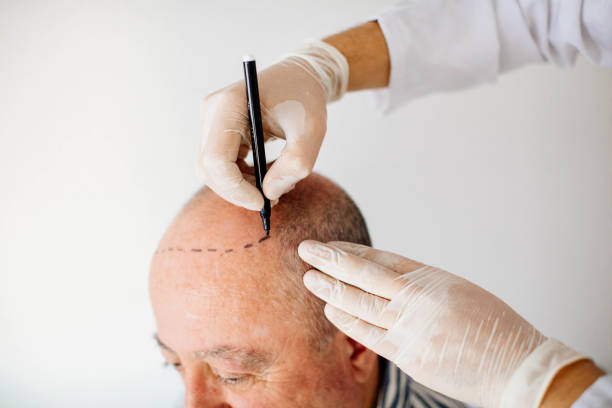Introduction
Hair transplants are becoming increasingly popular as a solution to hair loss. If you're considering or have recently undergone a hair transplant, understanding the recovery process and aftercare is crucial. This guide covers everything you need to know about what happens after the procedure and how to take care of yourself to ensure the best results.
What to Expect Immediately After the Procedure
After hair replacement in Abu Dhabi, it's normal to experience some discomfort, swelling, and redness around the treated area. You might also notice small scabs forming where the hair grafts were inserted. This is all part of the healing process, so don't be alarmed. However, it's important to manage these symptoms effectively to promote recovery.
First 24 Hours After a Hair Transplant
The first 24 hours are critical for the healing process. You should follow your surgeon's instructions carefully. Typically, this includes avoiding touching or rubbing the treated area, refraining from washing your hair, and sleeping in an elevated position to reduce swelling. Be sure to keep the treated area clean and dry, and wear loose-fitting clothing to avoid contact with your scalp.
First Week After the Procedure
During the first week, you'll likely be advised to avoid washing your hair for a few days. When you do start washing it, use a gentle, sulfate-free shampoo and avoid vigorous rubbing. You might be given a spray or solution to keep the transplanted area moist, which can help with healing. Protect your scalp from direct sunlight by wearing a hat or scarf when outdoors.
Medications and Topical Treatments
Your surgeon may prescribe pain relievers and anti-inflammatory medication to help with discomfort and swelling. Additionally, you might be given antibiotics to prevent infection. Topical treatments, such as minoxidil, might be recommended to support hair growth. Be sure to follow the prescribed dosage and application instructions.
Sleep and Resting After a Hair Transplant
Proper sleep and rest are essential during recovery. To avoid putting pressure on the transplanted area, sleep with your head elevated, using multiple pillows or a recliner. Avoid sleeping on your stomach or sides to prevent friction against your scalp. Resting helps your body recover more effectively.
When to Return to Work and Normal Activities
You may be eager to get back to your daily routine, but it's important to take it easy for the first week or so. Most people can return to work within a few days to a week, depending on the type of work they do. However, avoid strenuous physical activities, such as heavy lifting and intense exercise, for at least two weeks.
Maintaining Hygiene During Recovery
Maintaining good hygiene is crucial to avoid infections. Wash your hands thoroughly before touching your scalp. Use gentle hair care products and avoid using hairdryers, curling irons, or other heat styling tools during the initial recovery period. Keep the transplanted area clean but avoid excessive washing or scrubbing.
Common Challenges During Recovery
It's common to experience scabbing, crusting, and itching as the transplanted area heals. Resist the urge to scratch, as this can dislodge the hair grafts. Instead, use a gentle moisturizer or spray provided by your surgeon to soothe the scalp. If the itching becomes severe, contact your doctor for advice.
Managing Pain and Discomfort
Pain and discomfort are usually manageable with over-the-counter pain relievers. However, if the pain persists or worsens, or if you notice signs of infection, such as increased redness or discharge, seek medical advice immediately.
Diet and Nutrition for Optimal Recovery
A healthy diet can support the healing process. Include foods rich in vitamins and minerals, especially those known to promote hair health, such as fruits, vegetables, and lean proteins. Avoid excessive alcohol and caffeine, which can dehydrate you and slow down recovery.
Follow-Up Appointments and Monitoring Progress
Follow-up appointments are crucial to ensure that the transplant is healing properly and to track your progress. During these appointments, your surgeon will check the condition of the transplanted area and provide guidance on further care. Make sure to attend all scheduled appointments.
Long-Term Care for Transplanted Hair
After the initial recovery period, you can start incorporating regular hair care products into your routine. Choose shampoos and conditioners that are gentle and free from harsh chemicals. Avoid excessive heat styling and consider using hair growth serums or supplements as recommended by your doctor.
Frequently Asked Questions about Hair Transplant Recovery
How long does it take for hair to grow after a transplant?
It can take several months for the transplanted hair to start growing. Initial growth may be fine and thin, but it will thicken over time.
Can I wear a hat after a hair transplant?
Yes, you can wear a hat, but choose a loose-fitting one to avoid pressure on the transplanted area. It's best to wait a few days after the procedure before wearing one.





Comments